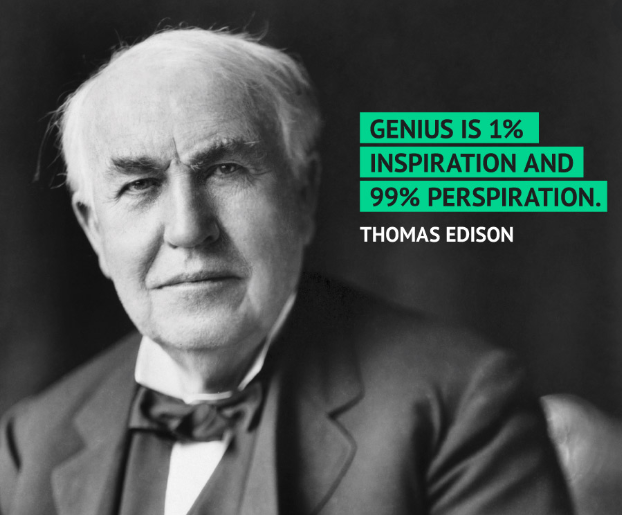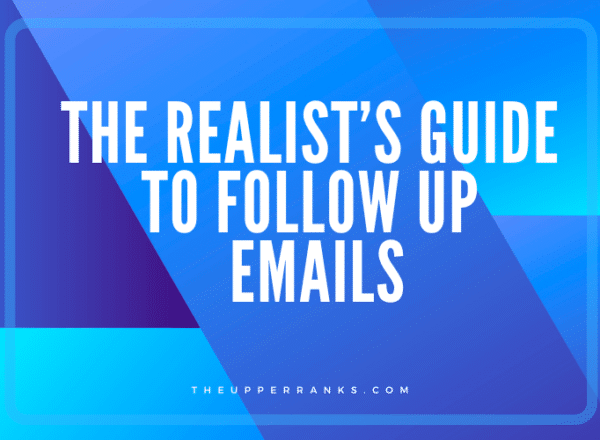In this guide, I’m gonna give you proven tips, tricks, and tactics for sending effective follow-up emails that get opened and replied to.
There are a lot of characteristics that are commonly shared between skilled, high-level link builders.
One such characteristic is creativity. A truly successful link building campaign requires an ability to conjure distinctive ways of making your site stand out amongst the herd. Sometimes you will need to think-outside-of-the box for ways to garner attention. This is when creative capabilities are vital.
A lot of the best link builders, if not all of them, also possess strong communication skills. So much of link building is explaining the value and nature of your brand/site to webmasters you possibly have never been in contact with before. The ability to persuade through effective and clear communication cannot be understated as an asset in link building.
But today I want to talk about a specific characteristic that is extraordinarily helpful for link building: persistence.
It can be easy to succumb to the feeling of despair (believe me, I know), but as a link builder, it’s detrimental to just give up when things aren’t going your way. And things won’t go your way often.
Even the best link builders go through phases where the links just aren’t pouring in. You can do everything right, and your inbox can still be empty of any responses.
That’s when you should remember this Thomas Edison aphorism:

A successful link building campaign requires creativity. But more than that, it requires just doing the work and pushing through.
Follow-up emails are an example. I’ve come across link builders in my time who send one email to a potential link prospect and that’s it. I’m blown away when I hear this.
I can’t tell you how many links I’ve acquired on the second, third, fourth, even fifth email attempts. If I operated on a “one-and-done” principle, I wouldn’t be in a position where I could provide any kind of link building advice.
There’s simply no excuse to not keep trying to reach your potential link prospects. You may not always get through, but to paraphrase Michael Jordan, you don’t reach 100% of the webmasters you don’t make a valiant effort to talk to.
That said, there’s a distinct difference in the way you follow up on contacts as opposed to the initial attempt. You don’t want to replicate what you did the first time, because why would you if it didn’t succeed?
Here are some things you should consider when writing follow-up emails.
How Long Before Following Up?
I don’t know about you, but every now and again I’ll get an email from someone promoting an online service of some kind. Then I’ll get another email the next day. And another the day after. And another the day after that. And another on… you get the idea.
Persistence pays off. But there’s a difference between “persistence” and, I’ll just be frank, “creepiness.” It’s just downright creepy and intense to get so many emails from the same previously unknown source.

This is why you need to space out your follow-up emails accordingly.
The amount of days can vary; there’s no exact science. The one hard-and-fast rule I would offer is to not send emails in consecutive days. Allow at least a full day before sending a follow-up.
I suggest waiting 2-3 days for your first follow-up, another 2-3 days for the follow-up after that, and then about a week for any follow-ups from there on. The time lapse between emails should get longer the more emails you send. This way, you’re not pestering the webmaster and you are saving yourself time for more potentially rewarding tasks.
Following Up With Multiple Channels
Email is generally the most widely-used method of outreach and communication in the link building sphere. This is true at my company and every other company that I know of. There’s a reason for this: email works! Any webmaster operating an authoritative domain is checking their email constantly.
However, it’s not 2002 anymore. Email is not the only way to get someone’s attention online.
When you’re in the follow-up phase, it’s best to explore multiple avenues of communication. Perhaps your emails keep landing in the spam folder of the person you’re attempting to reach (it happens). Look to see if that person has a presence on Facebook, Twitter, or any other social media platform. Follow them and reach out to them there.
I’ve also found success in blog comment sections. Find a recent or popular post and leave a comment expressing your desire to connect. It’s best not to expressly state your purpose on a publicly accessible page, so make it more about referring them to your first email or scheduling some time to properly chat.
You may even want to go bold and pick up one of these bad boys:

In some instances, offline communication may be necessitated. More importantly, it may be effective. If no one is responding to your emails or social media inquiries, find a number to call and start dialing. If the link is valuable enough, there’s no reason to leave any stone unturned when it comes to connecting.
Systemize Your Follow Ups
The thing about link building and emails is that you can’t operate everything synchronously. It’s simply unsustainable. You will be in various stages of the outreach funnel with various different webmasters simultaneously. If you don’t have a system in place, it can be easy to forget how many emails you’ve sent and when, especially if you’re working with more than just a handful of clients/sites.

This is why it’s imperative to have a link building system in place that tracks your progress and phases. That system can be an in-house mechanism or through the use of a third-party service, but either way, it’s vital to have something in place.
There are services and platforms that will send you automatic alerts when it’s been multiple days since your previous email. Others will notify you if your email has been opened, so if your email isn’t replied to, you know that now you should try reaching out to someone else.
Regardless of what tools/platforms you use, having a system in place will spare you and your team countless headaches and valuable time for you to be working on something else.
Follow Up More Directly
There are exceptions, but generally, you want your first email to be personable and engaging. You want to stand from the crowd and try to build a connection.
Follow-up emails should be more direct.

No frills. No long-winded anecdotes. In a follow-up email, it’s best to simply just get to the point and to be concise as possible.
If you want the webmaster to see your elegant proposal, there’s an easy solution to this: refer them to your first email.
You can do this by saying something to the effect of “per my email from (whatever date you sent your first email).” After that, state your purpose.
It’s also best to include a call-to-action. This is true with pretty much any outreach email, but with your follow-up email you should find a new call-to-action. And just as you’re being direct, be specific as well. Don’t ask “are you interested,” when you can ask “are you interested in linking to this site that provides” whatever it is your site provides.
A follow up email really should be no longer than five sentences. This will save you valuable time in the long run.
Follow Up with Questions
So maybe you’re at the stage when you’ve sent multiple emails. They were all objectively good, but for whatever reason didn’t elicit the response you were looking for. Even Michael Jordan missed more than half of his shots.

In your (potentially) final attempt, ask a simple question: is there someone else I should be talking to? There’s a chance you might be talking to the wrong person.
You can also try something like “Is there something I can help you with?”
Link building is relationship building. I’ve talked about it many times on this platform and others. This is why you should always be looking for ways to add value to a link prospect’s website. It’s better when you can identify these ways without having to ask, but when you’ve already sent several emails, there’s no harm in being more direct (see above paragraph).
Always Be Respectful
The Rolling Stones once said, “You can’t always get what you want.” This is particularly true when it comes to link building.
Sometimes no matter how hard you work or no matter how exemplary your work is, it’s just not going to pay off, unfortunately. That’s okay; I’d rather miss knowing I did everything I could than miss knowing there was more I could do.
This is all to say that if a webmaster isn’t getting back to you after all of your well-written outreach efforts, never nag or harass.

First off and most importantly, it’s just not the nice thing to do. Secondly, if you start harassing an influential webmaster over your link, think of the consequences. That webmaster might start talking to other people within your niche about you, and not in a positive manner. This could dramatically affect the number of links you build going forward.
This isn’t to say that you can’t add some urgency to your follow-up emails, but don’t go overboard and certainly don’t threaten. Always be mindful of your brand’s online presence and character.
Conclusion
Persistence pays off.
It’s a cliche, but there’s a reason some phrases become cliches: because there’s a ring of truth.
The more follow-up emails you send as a link builder, the better. This doesn’t just apply to the amount of link prospects you send emails to, but how many emails you send them as well.
Don’t sacrifice quality for quantity, but with follow-up emails, you’re better off remaining concise anyway. There’s no reason to not keep shooting your shot by sending follow-up emails to high value link prospects until you get the response you’re looking for.

Comments
Great post thanks for sharing this valuable information with us all. As we all know that the follow up emails are the trickiest mails that we have to send after a previous mails whose response is delayed due to some reason and we have to find out if the person whom we are contacting is interested or not. So many of the people got stuck and send mails that end up being strong and scares the client away. But with your comprehensive guide we can avoid such mistakes and make the deal strong with the potential client. Nice work keep it up.
Thanks for the great content, super informative for a link building newbie like myself!